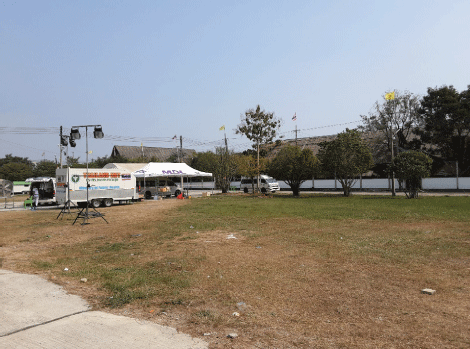No CrossRef data available.
Article contents
Thailand EMT Domestic Response During the COVID-19 Outbreak
Published online by Cambridge University Press: 22 November 2022
Abstract
Thailand Emergency Medical Team (Thailand EMT) was verified by the WHO in 2019 as a Type 1 fixed EMT. The second wave of COVID-19 hit the country in December 2020. Samut Sakhon province was the center of the spread with many migrant workers infected. Several field hospitals were set up, one being situated in the compound of a Buddhist Temple, Wat Krok Krak. Thailand EMT was tasked in setting up and running the operation here in the initial phase.
To describe Thailand EMT’s experience in operating a COVID-19 field hospital.
On December 30, 2020, 16 members of the Thailand EMT were deployed to the Wat Krok Krak Field Hospital. The team comprised of doctors, nurses, pharmacists, and emergency medical technicians who also functioned as logistic officers. Patients were admitted in groups every day. Physicians communicated with patients by using a telemedicine system to monitor patients clinically.
From December 31, 2020 through January 6, 2021, 143 COVID-19 patients were admitted. There were 104 female and 39 male patients. Patients were between 16 and 54 years of age, with a mean of 31.5 years. All were foreigner workers from nearby countries. Three patients had to be referred to a tertiary hospital. The rest of the patients were eventually discharged.
Thailand EMT was able to adapt and deployed to operate a COVID-19 field hospital. Collaboration with relevant agencies and local authorities played a key role. This deployment, although within Thailand, was a good learning opportunity for the team to prepare for future operations.
Tables and Figures (optional)

- Type
- Meeting Abstracts
- Information
- Copyright
- © The Author(s), 2022. Published by Cambridge University Press on behalf of World Association for Disaster and Emergency Medicine



